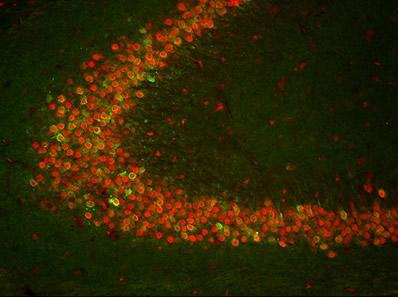What to Expect When Undergoing Plasmapheresis for CAD

"TIA-1 is known for its ability to regulate gene expression during cellular stress,"James Hewett, associate professor of biology, said in a press release. "We suspected that TIA-1 was involved with seizure suppression, but our findings suggested something else." Credit: Courtesy of Elsevier
In severe cases of cold agglutinin disease (CAD), plasmapheresis may be performed to remove autoantibodies called cold agglutinins from the blood to alleviate disease symptoms. If you will be undergoing the procedure, here’s what you can expect.
What is CAD?
CAD is a rare autoimmune disorder in which exposure to cold temperatures from 32 F to 50 F (0 C to 10 C) causes autoantibodies, also called cold agglutinins, to bind tightly to red blood cells. Such binding causes the blood cells to clump together and quickly break down, resulting in various symptoms that include anemia, fatigue, joint pain, and sometimes heart problems.
What is plasmapheresis?
In most mild cases of CAD, avoiding cold temperatures can help prevent the binding of autoantibodies to red blood cells. One treatment for serious or more severe CAD cases, however, is plasmapheresis.
The liquid portion of the blood, the plasma, contains antibodies as well as other proteins, vitamins, and electrolytes. Plasmapheresis, also called plasma exchange, is a process in which a patient’s plasma is replaced with fresh plasma or a plasma substitute, thereby removing harmful components such as autoantibodies. This may help lessen damage to red blood cells, and ease CAD symptoms.
Because the process does not slow autoantibody production, it may not prevent symptom reoccurrence, and some patients may need multiple rounds of plasmapheresis before benefits appear.
Preparing for plasmapheresis
Leading up to the procedure:
- Discuss with your physician if you need to stop some medications up to a week before the procedure, since plasma exchange can affect levels of circulating medicine in your body.
- Arrange for someone to give you a ride home after the procedure.
- Drink plenty of fluids, avoiding alcohol and caffeine, for a couple of days before the procedure.
- Make sure your vaccinations are up to date.
- Avoid smoking.
- Consume foods that are high in protein and low in sodium, potassium, and phosphorus in the days before treatment.
On the day of treatment:
- Follow your doctor’s instructions about your food intake before the procedure.
- Wear comfortable clothing with sleeves that can easily be pulled above your elbows.
Undergoing plasmapheresis
For the one- to three-hour outpatient procedure, which does not require anesthesia, doctors will place two needles with one tube each into your veins, possibly in different parts of your body. If the veins are too small, you may need a duration catheter in your shoulder or groin area. You will likely place your arms on pillows, and need to intermittently pump a fist to promote blood flow.
The machine will remove small amounts of blood from your body through one tube, which will go into a machine that separates the blood and plasma, leaving blood cells behind. Those blood cells will be mixed with fresh plasma or a plasma substitute. The machine will then return the new mixed blood to your body through the other tube. A single procedure typically removes 65% to 70% of plasma antibodies.
Barring any complications, you will need to rest before going home.
Post-procedure care
Drink plenty of fluids following the procedure.
While the procedure is generally safe, call your doctor if you experience excess bruising or other issues at needle insertion sites, fever or chills, seizures, rash or itching, nausea or vomiting, lightheadedness or fainting, severe pain, cough or breathing problems, chest pain, irregular heartbeat, belly or joint pain, fatigue, or stiffness.
Last updated: Aug. 6, 2020
***
Cold Agglutinin Disease News is strictly a news and information website about the disease. It does not provide medical advice, diagnosis, or treatment. This content is not intended to be a substitute for professional medical advice, diagnosis, or treatment. Always seek the advice of your physician or other qualified health provider with any questions you may have regarding a medical condition. Never disregard professional medical advice or delay in seeking it because of something you have read on this website.






